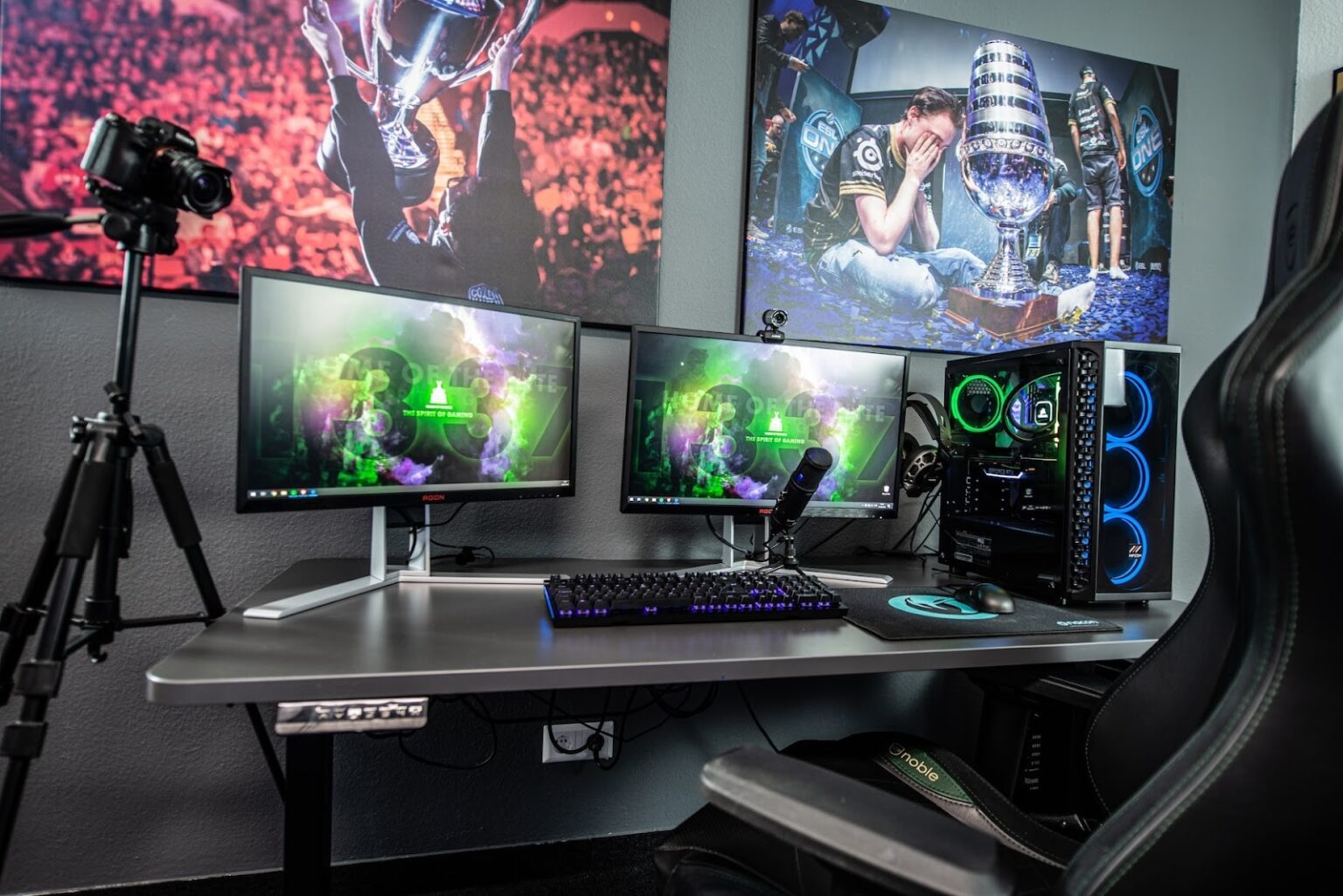
Refresh Rate And Response Time: Understanding The Key Specifications Of Gaming Monitors
Gaming has evolved into a mainstream form of entertainment, and as technology advances, gamers seek the best equipment to enhance their experience so they can excel at their favorite games like Diablo 4. One crucial component that significantly impacts gaming performance is the gaming monitor. When it comes to gaming monitors, understanding the key specifications is essential to make an informed choice. Two specifications that stand out in this regard are refresh rate and response time. In this article, we will delve into these specifications, exploring their significance and how they affect the gaming experience.
Understanding Refresh Rate
Refresh rate refers to the number of times per second a monitor refreshes its image. It is measured in Hertz (Hz). A higher refresh rate means that the monitor can display more frames per second (FPS), resulting in smoother motion and a more fluid gaming experience. For instance, a monitor with a 60Hz refresh rate can display up to 60 FPS, while a monitor with a 144Hz refresh rate can display up to 144 FPS.
The impact of a higher refresh rate is particularly noticeable in fast-paced games that involve quick movements, such as first-person shooters (FPS) and racing games. The increased number of frames displayed per second minimizes motion blur and improves the clarity of moving objects. This, in turn, allows gamers to react faster to in-game situations, providing a competitive edge.
It’s important to note that the benefits of higher refresh rates are most apparent when the computer’s graphics card can consistently deliver high FPS. If the graphics card struggles to keep up with the monitor’s refresh rate, the benefits may not be fully realized. If you’re looking for a budget-friendly option, consider the 75Hz LCD Computer Monitor for smooth gameplay.
Exploring Response Time
Response time refers to how quickly a pixel can change from one color to another. It is measured in milliseconds (ms). A lower response time means that the pixels can transition rapidly, resulting in reduced motion blur and clearer images, especially during fast-paced scenes.
Motion blur occurs when pixels are unable to switch their colors quickly enough, leading to a trail-like effect behind moving objects. This can impact the overall visual clarity and may hinder gamers’ ability to track and react to fast movements accurately. By choosing a monitor with a lower response time, gamers can minimize motion blur, resulting in sharper images and improved responsiveness.
It’s worth mentioning that response time is often measured using the gray-to-gray (GtG) transition, which may not fully represent the real-world response time. Other factors, such as input lag, pixel overdrive, and the monitor’s overall quality, can influence the actual gaming experience.
Choosing the Right Refresh Rate and Response Time
When selecting a gaming monitor, the ideal refresh rate and response time depend on various factors, including gaming genre and personal preferences. Competitive gamers who primarily play fast-paced titles might benefit from a higher refresh rate, such as 144Hz or even 240Hz. On the other hand, casual gamers who prioritize visual quality may find a balance between refresh rate and response time more suitable.
It’s crucial to understand the trade-offs between higher refresh rates and lower response times. Achieving both simultaneously can be challenging, as monitors with higher refresh rates tend to have slightly higher response times. Striking a balance between the two specifications is crucial to finding the optimal gaming experience.
Technology Advancements and Variations
In recent years, several technological advancements and variations have emerged to further enhance gaming monitors. Adaptive sync technologies, such as NVIDIA’s G-Sync and AMD’s FreeSync, aim to eliminate screen tearing and stuttering by synchronizing the monitor’s refresh rate with the graphics card’s output. This results in a smoother and tear-free gaming experience.
Variable refresh rate (VRR) is another notable feature that dynamically adjusts the monitor’s refresh rate based on the graphics card’s output. This further reduces screen tearing and stuttering while maintaining optimal visual fluidity.
For competitive gamers seeking the utmost advantage, high refresh rate options like 240Hz or even 360Hz are available. These monitors offer incredibly smooth motion and responsiveness, ideal for fast-paced and competitive gaming scenarios.
Additionally, the popularity of ultrawide monitors has grown in recent years. These wider displays offer an immersive gaming experience but may come with lower refresh rates and slightly higher response times compared to traditional monitors. It’s important to consider these factors when choosing an ultrawide monitor.
Real-World Examples and Recommendations
Several gaming monitors on the market cater to various refresh rates and response times. Some popular options include the ASUS ROG Swift PG279QZ (27-inch, 1440p, 165Hz), the Acer Predator X27 (27-inch, 4K, 144Hz), and the Alienware AW3418DW (34-inch ultrawide, 3440×1440, 120Hz). These monitors offer a balance between refresh rate and response time while delivering excellent visual quality.
When considering a gaming monitor, it’s essential to take into account personal budget, gaming setup, and individual preferences. Reading reviews from trusted sources and seeking recommendations from gaming communities can also provide valuable insights.
Conclusion
Refresh rate and response time are critical specifications to consider when selecting a gaming monitor. A higher refresh rate ensures smoother motion and improved visual clarity, while a lower response time minimizes motion blur and enhances responsiveness. The ideal specifications depend on the gaming genre, personal preferences, and the desired balance between smoothness and clarity.
With advancements in technology and variations in monitor options, adaptive sync technologies, variable refresh rates, and high refresh rate options offer further customization possibilities. By considering real-world examples and recommendations, gamers can find the gaming monitor that best suits their needs, budget, and gaming setup.







